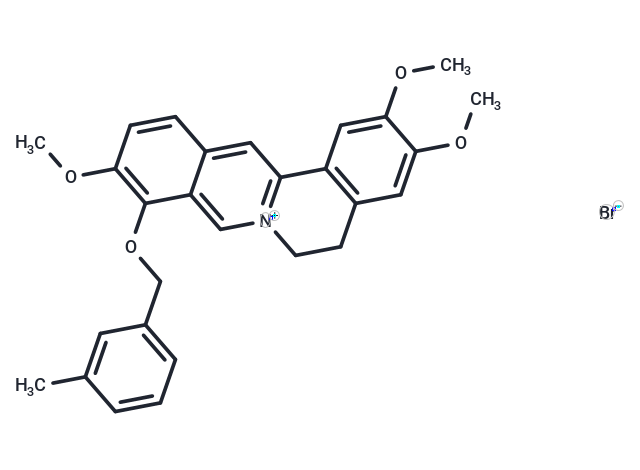Shopping Cart
- Remove All
 Your shopping cart is currently empty
Your shopping cart is currently empty

FXR agonist 3 is an anti-NASH compound with antifibrotic and anti-fibrotic activity, inhibiting the expression of COL1A1, TGF-β1, α-SMA, and TIMP1, with an IC50 value of 8.19 μmol/L for COL1A1. FXR agonist 3 ameliorates CDAHFD and BDL-induced liver injury in vivo by activating FXR.

| Pack Size | Price | Availability | Quantity |
|---|---|---|---|
| 1 mg | $120 | In Stock |
| Description | FXR agonist 3 is an anti-NASH compound with antifibrotic and anti-fibrotic activity, inhibiting the expression of COL1A1, TGF-β1, α-SMA, and TIMP1, with an IC50 value of 8.19 μmol/L for COL1A1. FXR agonist 3 ameliorates CDAHFD and BDL-induced liver injury in vivo by activating FXR. |
| In vitro | In LX-2 cells, FXR agonist 3 (0, 2.5, 5, 7.5, and 10 μM; 24 hours; with or without 2 ng/mL TGF-β1 for another 24 hours) decreased COL1A1, TGF-β1, α-SMA, and TIMP1 protein expressions in a dose-dependent manner[1]. |
| In vivo | In C57BL/6 N mice fed a CDAHFD diet for 16 weeks, FXR agonist 3 (200 mg/kg; oral gavage; daily for 4 weeks after CDAHFD-induced) decreased the expression of IL-1β and IL-6 in the liver[1]. |
| Molecular Weight | 521.12 |
| Formula | C28H28BrNO4 |
| Smiles | COC1=CC2=C(C=C1OC)CC[N+]3=C2C=C4C(C(OCC5=CC=CC(C)=C5)=C(OC)C=C4)=C3.[Br-] |
| Storage | store at low temperature | Powder: -20°C for 3 years | In solvent: -80°C for 1 year | Shipping with blue ice. | |||||||||||||||||||||||||||||||||||
| Solubility Information | DMSO: 200 mg/mL (382.83 mM), Sonication is recommended. | |||||||||||||||||||||||||||||||||||
Solution Preparation Table | ||||||||||||||||||||||||||||||||||||
DMSO
| ||||||||||||||||||||||||||||||||||||

Copyright © 2015-2025 TargetMol Chemicals Inc. All Rights Reserved.